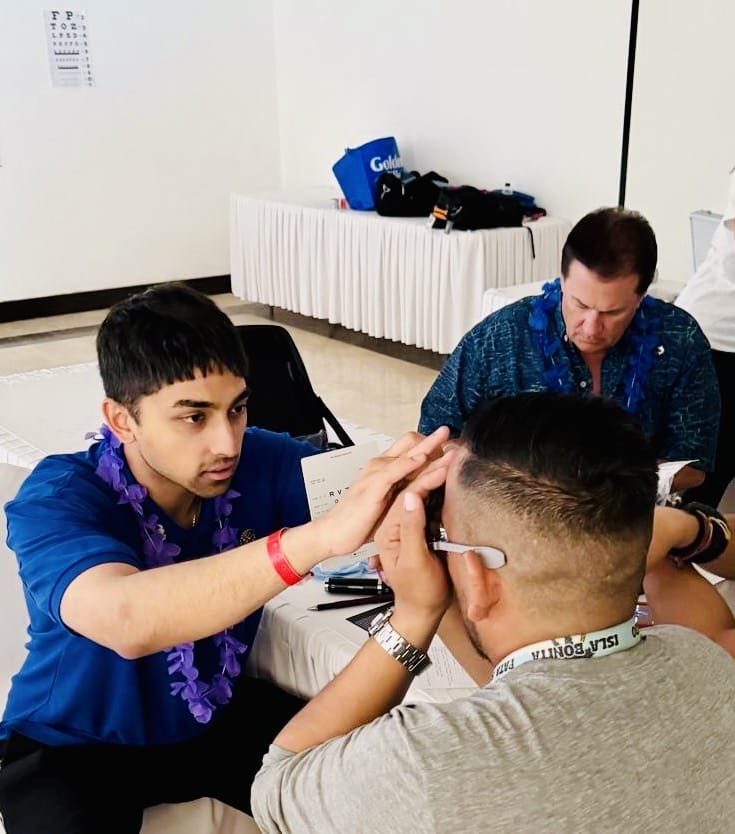WesternU promotes Falls Prevention Awareness Day
Every 15 seconds, an older adult is seen in an emergency department for a fall-related injury. Falls are the leading cause of both fatal and nonfatal injuries for those ages 65 and over. And the chances of falling and being seriously injured in a fall increase with age.
As the population ages and baby boomers enter the at-risk demographic at a rate of 8,000 to 10,000 a day, we must work together to reach the Healthy People 2020 objective of reducing fall-related emergency department visits by 10 percent.
Western University of Health Sciences in Pomona, Calif., joins the National Council on Aging in celebrating Falls Prevention Awareness Day on Sept. 22, 2012. The National Council on Aging leads the Falls Free© initiative and supports the State Coalitions on Fall Prevention Workgroup. This year, 45 states will participate in the fifth annual Falls Prevention Awareness Day on September 22, the first day of fall. They will join more than 70 national organizations, professional associations, and federal agencies, including the National Eye Institute and its National Eye Health Education Program, that make up the Falls Free Initiative to raise awareness through educational presentations, risk-screening activities, and events for older adults. Activities bringing attention to common-sense, effective strategies to reduce the risk of falling include the following:
• Engaging in a physical activity regimen that includes balance, strength training, and flexibility.
• Consulting with a health professional about getting a falls risk assessment.
• Having medications reviewed periodically.
• Getting comprehensive dilated eye exams regularly.
• Taking steps to ensure that home and community environments are safe and supportive.
WesternU’s Patient Care Center provides many services to aid in reducing the risk of falling, including community outreach. On behalf of the Eye Care Center, College of Optometry Chief of Neuro-Optometric Rehabilitation Valerie Wren, OD, FAAO, recently gave an informational talk to the Arcadia Community Center on “Vision and Fall Prevention.” This talk targeted community seniors to help promote vision and safety.
Regular vision checks and proper vision correction are two of the major recommendations from the Centers for Disease Control and Prevention (CDC) to prevent falls and traumatic brain injuries (TBI) in the older adult. In Arcadia, strategies for fall prevention were discussed, and 42 vision and balance screenings by College of Optometry third-year students were provided to the attendees.
“One in three adults over the age of 65 falls every year, and many fall again and again. Less than half will mention this to their health care providers, so we need to be more proactive about asking about history of falls,” Wren said. “Vision input is needed to safely navigate complex environments, for path planning, and obstacle avoidance. Vision loss is a contributing factor for falls and fractures due to inferior visual field loss from glaucoma and peripheral vision loss from stroke. Regular vision care is so important for this age demographic, for safety and to maintain their independence in the community.”
The Eye Care Center at Western University of Health Sciences, at 795 E. Second St., Pomona, Calif. 91766, offers a comprehensive, interprofessional approach with the latest instrumentation and techniques to manage even the most challenging eye and vision problems. The Eye Care Center provides low vision rehabilitation, vision therapy and neuro-optometric rehabilitation.
People with visual impairments, or “low vision,” are especially at risk for falling. Visual impairment is an independent risk factor for falls in people of any age, but can particularly increase the risk of falls in older adults.
College of Optometry Assistant Professor Kierstyn Napier-Dovorany, OD, FAAO, is conducting a study with Victoria Graham, DPT, OCS, NCS, of California State University, Northridge, on the effect of visual impairment on falls to determine the best tests for optometrists to perform on people with visual impairments so that those at risk of falling can be evaluated by a professional before they have a fall.
“Most fall prevention programs provide modified instructions for people with poor vision. We are looking at both simple mobility tests that are visually sensitive and vision tests that may correlate with falls,” Napier-Dovorany said. “What we are noticing is that people with poor contrast sensitivity, which is the ability to see shades of gray such as a typical concrete curb, which can lead to a trip or fall. People can have poor contrast sensitivity from many eye conditions, cataracts in particular.”
Faculty members and students in the College of Allied Health Professions Department of Physical Therapy Education are educating local seniors while evaluating the Stand Up and Be Strong program. The study, funded by a WesternU grant and conducted by Department of Physical Therapy Education faculty members Mary Hudson-McKinney, PT, MS, DPT, NCS, Donna Redman-Bentley, PT, PhD, and Dayle Armstrong, PT, MS, DPT, follows subjects over a six-month cycle.
“We’re looking at the predictive value of a common tool called Stand Up and Be Strong,” Hudson-McKinney said. “It’s an indirect measure of lower extremity muscle strength, so a person can very easily see if they have a lot of difficulty getting out of a chair. That might be a sign of increasing fall risk.”
Doctor of Physical Therapy students visit senior centers and work in pairs with each individual. They take a comprehensive health history, review medications, find out if they have a history of prior falls, and do repeated sit-to-stand measures.
“We follow individuals over a six-month time to see how predictive that test was,” Hudson-McKinney said. “While we’re seeing them, we’re educating them through the process, as well.”
The goal is to prevent falls before costly injuries occur.
“It makes more sense to try to prevent falls because of the costly impact falls can have on a persons’ wellness, fear of falling, and quality of life, let alone the significant medical costs,” Hudson-McKinney said.
For more information about WesternU’s Patient Care Center, visit http://www.westernupcc.com.
To learn what your state is doing to support falls prevention, visit http://www.ncoa.org/FallsMap. For more information on Falls Prevention Awareness Day and how you can participate, visit http://www.ncoa.org/FPAD.



